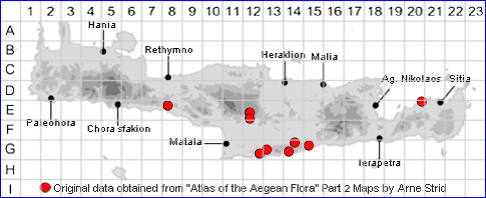SPECIES DESCRIPTION
LITHOSPERMUM SIBTHORPIANUM
Family and Genus:- See- BORAGINACEAE
Common Names:- None
Homotypic Synonyms:- Buglossoides arvensis ssp. sibthorpiana
Meaning:- Lithospermum (Gr) Stone-seed. A name used by the Greek physician
and botanist Dioscorides.
Sibthorpianum (L) For professor Humphrey Sibthorp (1713-97, of
Oxford, and his son John (1758-97), English botanist.
Stems:-
1) 1·5-17(-45) cm, usually numerous, the central erect, the others procumbent or
ascending, densely leafy, hispid.
Leaves:-
1) .5-4(-6) mm wide, narrowly linear or oblong.
Flower:-
1) Bloom:
a) Pedicels, cylindrical.
b) receptacle, not or only slightly oblique in fruit.
2) Corolla, 4-6·5(-8) mm.
a) tube, slender, and abruptly widening limb.
3) Calyx, usually distinctly shorter than corolla-tube in flower.
Fruit:-
1) Nutlets, 2.5-2.75 x 1.5-1.75 mm. adaxial not embedded in the receptacles and
pedicel, drawn out and gradually narrowing.
a) tubercles, prominent.
Key features:-
1) Nutlets, 2-3 x 1·5-2 mm. with prominent tubercles. Adaxial nutlet not embedded
in the receptacles and pedicel.
2) Corolla, 4-8 mm, usually white, hypocrateriform.
3) Calyx, usually distinctly shorter than corolla-tube in flower.
4) Pedicels, cylindrical in fruit.
5) Receptacle, not oblique in fruit.
Habitat:- Dry grassland and other semi-natural habitats.
Distribution:- Somewhat scattered across the Aegean area, not common. C to SE
Europe and SW Asia to Iran.. Limited distribution on Crete, mainly to the central
south.
Flowering time:- Mar-May.
Photo by:- Steve Lenton

